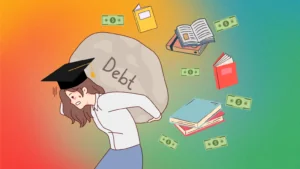Jordyn Beazley and Caitlin Cassidy of The Guardian reported that a concerning trend has emerged in Australian education funding over the last decade since the pivotal Gonski review. Data analysis reveals a disturbingly widening gap between the government funding that private schools and public schools receive, reflecting an alarming systemic inequality in the country’s education sector.

✅ AI Essay Writer ✅ AI Detector ✅ Plagchecker ✅ Paraphraser
✅ Summarizer ✅ Citation Generator
Key takeaways:
- In the decade following the Gonski review, a significant disparity in funding between private and public schools in Australia has developed, with private schools receiving almost double the increase in funding compared to public schools
- The unequal distribution of government funding has led to one of the most segregated school systems, exacerbating the socioeconomic divide in educational outcomes.
- Despite its initial promise, the Gonski review’s recommendations have not been implemented effectively
The Unfulfilled Gonski Promise
Back in 2011, the Gonski review ignited hope in the Australian education sector, particularly among advocates of public schools. The review hailed as a landmark effort to address systemic inequalities, had a straightforward objective: redesign the education funding model to better cater to the needs of all Australian schools. It aimed to decrease the social disadvantage impact on educational outcomes and sought to establish a more level playing field.
REFERENCE:
The Gonski Review refers to a comprehensive review of funding for schooling in Australia, officially known as the “Review of Funding for Schooling.” It was led by David Gonski, an Australian businessman and philanthropist, hence the name “Gonski Review.”
However, in the decade following the Gonski review, the reality appears starkly different from what the review envisioned. From 2012 to 2021, real government funding to independent and Catholic schools rose by 34% and 31%, respectively, whereas funding to public schools saw a meager increase of just 17%. This data was sourced from the parliamentary library and was exclusively provided to Guardian Australia.

In a striking example, the growth in government funding to independent schools per student in Queensland was nine times greater than for public schools. This kind of inequity in funding paints a worrying picture of the country’s education state, underscoring a critical need for systemic review and reform.
“The money has gone to the wrong place,” remarked Trevor Cobbold, an economist and the national convenor of Save Our Schools. “It has gone to those least in need.” His words echo the frustration of many who see these funding decisions as a direct contradiction to the principles proposed by the Gonski review.
A Tumultuous Decade of Decision-Making
Penny Allman-Payne, The Greens education spokesperson, expressed her concerns about this growing disparity. She stressed that the funding gap has resulted in one of the most unequal and segregated school systems in the OECD, an alarming indictment for a developed nation like Australia. A Unicef report in 2018 backed her claim, ranking Australia 30th out of 38 OECD countries in providing equitable access to secondary education.
Several decisions made by successive governments since the Gonski review have been criticized for exacerbating this educational inequality. A significant turning point was the Gillard government’s decision that “no school would lose a dollar,” resulting in private schools, already well-funded at the time, continuing to maintain their substantial revenue streams.
Additionally, the Abbott government’s 2014 budget scrapped the most considerable increases in school funding agreed under the Gonski reforms. These increases were planned for 2017 and 2018 and were predominantly targeted at public schools.
The Turnbull government further undermined public schools in 2017 by introducing an arbitrary commonwealth funding cap of 20% for public schools, expecting state governments to shoulder the remaining 80%. In stark contrast, the funding cap scenario for non-government schools was the exact opposite, with the commonwealth shouldering the larger share.
One of the more recent decisions adding to this funding discrepancy came from the Morrison government. This government negotiated a deal leading to a $4.6bn increase in funding for Catholic schools over ten years without a corresponding increase for public schools.
A Vision for a More Equitable Future
This stark disparity in funding allocation raises serious concerns about the long-term impact on the country’s public education system and, most importantly, the students who rely on it. The clear inference is that Australia’s public education sector in its current state is being significantly short-changed.
As it stands, the next National School Reform Agreement review is underway. With the incumbent Education Minister Jason Clare at the helm, the federal government aims to work with state governments to ensure all schools can reach 100% of their Schooling Resource Standard (SRS). Clare acknowledged the need for improved funding in the public education sector, stating, “Australia has a good education system, but it can be a lot better and a lot fairer.”
The systemic inequality in education funding is a substantial issue Australia must urgently address. Students from disadvantaged backgrounds or remote areas should not have their potential stifled due to inadequate funding. The goal is to ensure that all Australian students, regardless of their background or where they live, have access to a high-quality education.
The discussion on this topic is far from over, and the Guardian promises to continue exploring the failures of successive Australian governments in making the country’s education funding fairer. As the conversation unfolds, the collective hope is for a rekindled commitment to rectifying the systemic imbalance in Australia’s education sector, ensuring a fair and equitable future for all students.
Related stories:
American Confidence in Higher Education Plummets, Reveals Gallup Poll
Being Behind in Primary Schools Is No Problem to Australian Students as They Catch Up by High School
Affirmative Action and The Call for a College Admissions Overhaul
Follow us on Reddit for more insights and updates.





Comments (0)
Welcome to A*Help comments!
We’re all about debate and discussion at A*Help.
We value the diverse opinions of users, so you may find points of view that you don’t agree with. And that’s cool. However, there are certain things we’re not OK with: attempts to manipulate our data in any way, for example, or the posting of discriminative, offensive, hateful, or disparaging material.